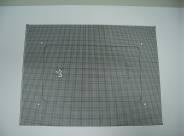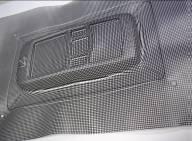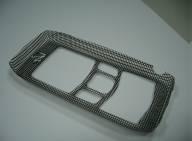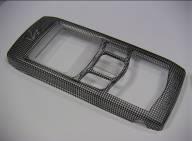
Interactive Platform § Epoxy Stripping Method
How to remove EXA528 adhesive
Foreword: Since epoxy resin is a thermosetting resin and the cured product is a cross-linked structure, it cannot be heated and melted by ordinary plastic (thermoplastic), and it has good adhesion and chemical resistance. Therefore, if you want to remove the cured epoxy resin, a more tedious procedure is required. The following descriptions are given for different adhesive substrates:
1. Metals (such as aluminum, iron, copper, stainless steel, etc.): (1) Use a flame blowtorch (temperature above 300 degrees Celsius), heat for 30 seconds, and use the principle of high-temperature adhesion strength reduction to release the adhesive surface. (2) Use a high-temperature oven (temperature above 200 degrees Celsius), heat for ten minutes, and then use pliers to separate and peel from the adhesive surface. (3) The small area can be directly heated with a soldering iron for five minutes, and the adhesive surface can be peeled off while it is still hot.
2. General-purpose plastics (such as ABS, acrylic, PVC, PS, etc.): Generally speaking, the adhesive strength of resin will be higher than that of general plastic materials, and the temperature resistance is also better than plastic, so it is not recommended to recycle.
3. Engineering plastics (such as PC, PET, PEI, POM, NYLON, PEEK, etc.): (1) Use a high-temperature oven (temperature above 200 degrees Celsius), heat for ten minutes, and then use pliers to separate and peel from the adhesive surface. (2) Choose a solvent that will not corrode the plastic and soak it for 24 hours to destroy the adhesive surface (THF and MEK are recommended for the solvent). Please do it in a well-ventilated place and read the material safety information of the solvent carefully before operation.
4. Glass type: The method of use is the same as that of metal type. For small area adhesion, it can be soaked in a polar solvent such as MEK, Ethyl Acetate, Ethanol for 24 hours, so that the solvent will destroy the adhesive surface.
Conclusion: Epoxy resin is a very good adhesive. When using it, it should be avoided to disassemble it after curing. If there are special materials that are not within the above range, please contact the R&D staff of Everwide Chemical.
Experiment § IMD (In Mold Decoration) (2)
Tow、IMF: In Mold Form
The technical feature of this technology is that the printing ink is protected on the inner layer, which can have the effect of scratch resistance and three-dimensional production and can be matched in various ways in printing, but the production yield is low, and there are many technical difficulties in the process to be overcome.
Advantages: 1. The mold development cycle is short and the proofing is fast. 2. The variable effect of the printing layer is rich. 3. The printing layer is protected and has an anti-scratch effect.
Disadvantages: 1. The defective rate is high, about 40~50%. 2. The production capacity of a single pair of molds is limited, and multiple sets of molds are required for mass production. 3. The process is longer.
Printing (gravure, screen) 🡲 Forming (hot pressing, vacuum) 🡲 die-cutting 🡲 injection molding


─Author: Ms. Miao-Ling,Lin , R&D Engineer, Everwide Chemical
Knowledge § Surface Treatment? (2)
Q: What is the role of surface treatment?
A: (1) Clean the surface of the object.
(2) Improve the adhesive or improve the anchor effect of the primer.
(3) Increase the wettability of the surface of the object.
(4) Establish a chemical bond between the material surface and the adhesive or primer.
Product introduction § JB963
The appearance of this product is a soft, low stress, and high flow viscous liquid. JB963 has good thermal shock resistance and flame resistance, suitable for infusion of coils and transformers. If it needs to be applied to a large area of infusion, it is recommended to pre-cure the resin at low temperature, and then raise the temperature to fully cure, so as to avoid excessive reaction and damage to the material. JB963 has excellent durability and can pass many different environmental tests.
Living § Workplace Safety
A few days ago, inspectors from the Environmental Protection Bureau visited the factory and told us that the factory smell was very strong. I asked him, "Which chemical plant doesn't have a smell?" But the EPA inspectors believed that "a smell is poisonous." However, the fact that there is a smell does not mean that it is poisonous and that there is no smell does not mean that it is not poisonous. For example, durian and rotten eggs are both stinky, banana water and banana are both delicious, but which one is poisonous? Water can carry a boat and capsize it. Someone once drank water until they choked to death. All the hazards are related to the amount you touch and absorb into your body and also vary according to individual physical conditions. The company stipulates that various protective equipment must be worn in the workplace, but many colleagues still do not wear them according to the regulations. Although the heat is unbearable, in order to protect your health, I still strongly advocate the use of protective equipment. The harmfulness of the substances that my colleagues come into contact with within the workplace today is mostly unclear. What damage will be done after that, we don't know. Therefore, from today onwards, you should take good care of yourself to avoid damage to your healthy body. Sweat for life, don't exchange blood for life.
─Author: Mrs. Yun-Xian, Liu Director of Labor Safety, Everwide Chemical






ความคิดเห็น